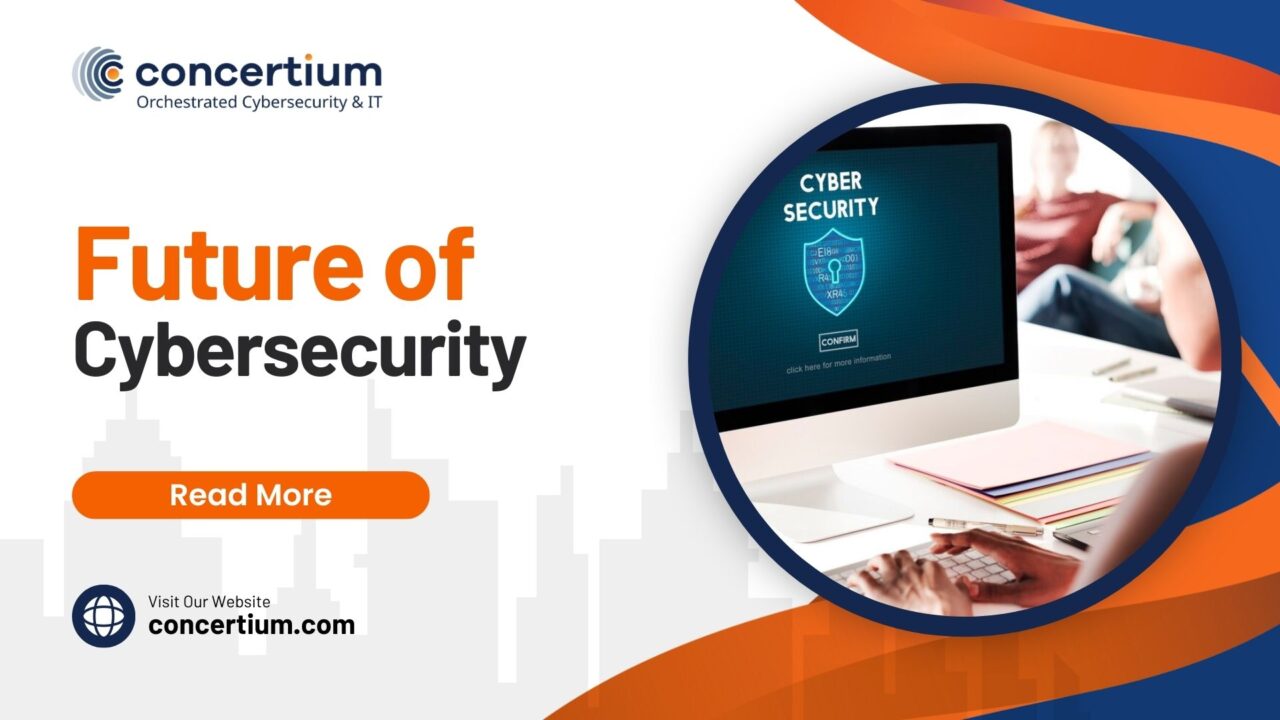Future Of Cybersecurity
As we navigate through complex cyber threats and technological advancements, the discourse on the future of cybersecurity becomes crucial. This blog post not only prepares you for emerging challenges but also equips you with the knowledge to stay ahead. With cyber-attacks becoming more sophisticated, understanding the trajectory of security trends is paramount for businesses and individuals alike.
In this blog post you’ll learn about future of cybersecurity in 2024 and beyond, moreover emerging trends and predictions. let’s explore in details!
Emerging Cybersecurity Trends
Trend Analysis from Experts
The World Economic Forum has pinpointed pivotal trends shaping our cyber future. At the core is the zero-trust architecture, a security model advocating for continuous verification of all users within a network. This approach challenges traditional perimeter-based defenses and aligns with the growing need for stringent security measures.
Equally significant is the role of AI in cybersecurity, promising enhanced threat detection and response capabilities. Moreover, the advent of quantum computing presents a dual-edged sword, offering both groundbreaking security solutions and potential vulnerabilities for sensitive information.
Impact of Technological Advancements
The integration of AI and machine learning into cybersecurity strategies indicate a new era of defense mechanisms. These technologies enable the analysis of vast datasets to identify patterns indicative of cyber threats, significantly reducing the time to detect and mitigate potential breaches.
Similarly, quantum computing is set to revolutionize the encryption landscape, offering superior protection for sensitive information against sophisticated hackers. However, as we harness these powerful technologies, the need for robust ethical frameworks and security protocols becomes evident to safeguard against the misuse of AI and ensure privacy and security in the digital domain.
Advancements in Cybersecurity Technologies
Artificial Intelligence & Machine Learning
Organizations are increasingly leveraging artificial intelligence (AI) and machine learning (ML) to enhance their cybersecurity frameworks. These technologies have proven invaluable in automating critical aspects of cybersecurity, including the detection of threats. AI and ML excel at analyzing vast datasets to unearth risks, a boon particularly for smaller enterprises with limited cybersecurity manpower.
Moreover, AI and ML are adept at modeling the behavior of cyber criminals, offering security teams predictive insights into potential cyber attacks based on emerging data patterns.
However, it’s crucial to recognize that cyber criminals also exploit AI to orchestrate sophisticated attacks, underscoring a dual-edged sword. The trajectory for AI and ML in cybersecurity points towards significant growth, marking a vital trend for businesses to integrate into their future planning.
Cloud Computing & Edge Computing
The shift towards remote work has accelerated the adoption of cloud computing, with many entities migrating to cloud platforms. Despite the benefits of scalability, operational flexibility, and cost-efficiency, cloud services remain a prime target for cyber attacks. Security vulnerabilities, such as misconfigurations, unauthorized access, and weak authentication methods, frequently lead to data breaches in cloud environments.
Conversely, edge computing emerges as a cutting-edge paradigm, propelling data processing closer to the origin of data generation, or the “edge”. This approach minimizes latency, boosts efficiency, and importantly, reduces the risk of data breaches by limiting the transmission of sensitive data over networks. By enabling localized data processing, organizations can implement advanced security measures directly at the data source, thereby enhancing protection against cyber threats and facilitating quicker response to security incidents.
Quantum Computing
Quantum computing represents a revolutionary branch of computing, employing quantum-mechanical phenomena to perform operations on data at unprecedented speeds. This innovation holds the potential to both fortify and compromise cybersecurity measures.
On one hand, quantum computing poses a formidable threat to contemporary encryption standards, with the capability to decrypt algorithms designed for the computational limits of classical computers. Conversely, quantum computing harbors the promise to significantly bolster cybersecurity.
Quantum Key Distribution (QKD), for instance, offers a secure method for communication, impervious to interception by hackers. Additionally, quantum computing’s potential to develop novel encryption methodologies and enhance machine learning algorithms for real-time threat detection underscores its dual role in shaping the future of cybersecurity.
Incorporating these advancements into cybersecurity strategies is essential for staying ahead of evolving threats and safeguarding digital assets against the sophisticated tactics of cyber criminals. As these technologies continue to evolve, they will play a pivotal role in defining the landscape of cyber security trends, offering new avenues to reduce the risk of security issues and data breaches across the increasingly interconnected expanse of the Internet of Things.
Cybersecurity Predictions for 2024 and Beyond
Experts Cybersecurity Predictions
Experts insights for 2024 and beyond highlight a pivotal shift towards comprehensive privacy programs and mature zero-trust implementations. As organizations strive to differentiate and foster trust, the role of cybersecurity professionals undergoes a significant transformation.
The emphasis on cyber risk management and the integration of AI and machine learning into security frameworks underscore a future where cybersecurity is not just about defense but enabling secure innovation and decision-making.
Challenges and Opportunities
The journey towards 2024 is fraught with challenges such as the widening talent gap, regulatory pressures, and the complexities introduced by cloud computing. The demand for skilled cybersecurity professionals outpaces supply, necessitating innovative approaches to talent development and retention.
In addition, the regulatory landscape continues to evolve, presenting both compliance hurdles and opportunities for strengthening data protection measures. The proliferation of IoT devices further complicates the security model, requiring adaptive strategies to safeguard sensitive information from increasingly sophisticated cyber-attacks.
This foundational framework offers a glimpse into the dynamic and multifaceted nature of cybersecurity’s future. For a deeper exploration of these topics, including detailed analysis, predictions, and actionable insights, consider delving into resources like the World Economic Forum’s agenda on cybersecurity trends, McKinsey’s insights into over-the-horizon defensive capabilities, and experts cybersecurity predictions. These resources provide valuable perspectives and guidance to navigate the evolving cyber landscape effectively.
Cybersecurity and National Security
The Role of Governments and International Cooperation
In the digital age, national security is deeply intertwined with cybersecurity. The global nature of cyber threats, such as ransomware and cybercrime, necessitates robust international cooperation. Governments worldwide are recognizing that to protect their nations, they must collaborate with other countries to share intelligence, strategies, and best practices.
This collaborative effort is crucial for staying ahead of cybercriminals who do not respect national boundaries. Therefore, fostering partnerships and alliances becomes a cornerstone in the quest to safeguard global cybersecurity.
Public and Private Sector Collaboration
Building a resilient cybersecurity infrastructure requires a concerted effort between the public and private sectors. This partnership is essential, as private companies often control critical infrastructure and possess valuable data.
The public sector can provide regulatory frameworks, intelligence, and resources, while the private sector can offer innovation, agility, and expertise. Together, they can implement robust security measures to protect against emerging threats. This synergy is pivotal for developing new security technologies and protocols, ensuring a comprehensive defense against cyber attacks.
Addressing the Cybersecurity Talent Gap
Current State of the Cybersecurity Workforce
The cybersecurity talent gap is a growing concern that threatens the future of cyber security. As cyber threats evolve and multiply, the demand for skilled security professionals far exceeds the supply. This disparity poses significant security challenges, as there are not enough trained individuals to monitor systems, analyze threats, and defend against cyber attacks. The talent shortage is a critical bottleneck that could undermine efforts to secure digital assets and infrastructure.
Strategies for Bridging the Gap
Addressing the cybersecurity talent gap requires innovative approaches. Education and cross-disciplinary training are key to expanding the pool of cybersecurity professionals. By integrating cybersecurity education into broader curriculums and offering specialized training programs, we can attract a diverse range of talents to the field.
Additionally, enhancing the appeal of cybersecurity roles through competitive salaries, career advancement opportunities, and fostering a culture of continuous learning can draw more individuals to this vital sector. Public and private sector collaboration in education and training initiatives is also crucial for preparing the workforce to meet future cyber security challenges.






